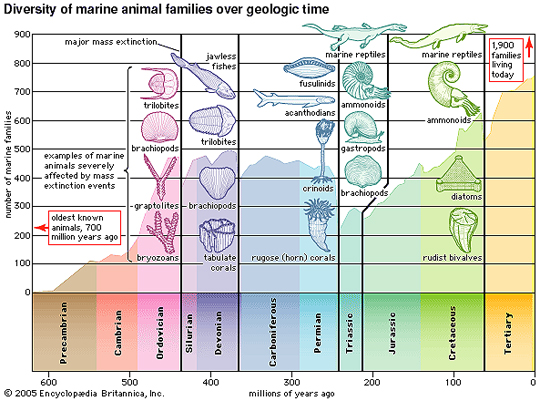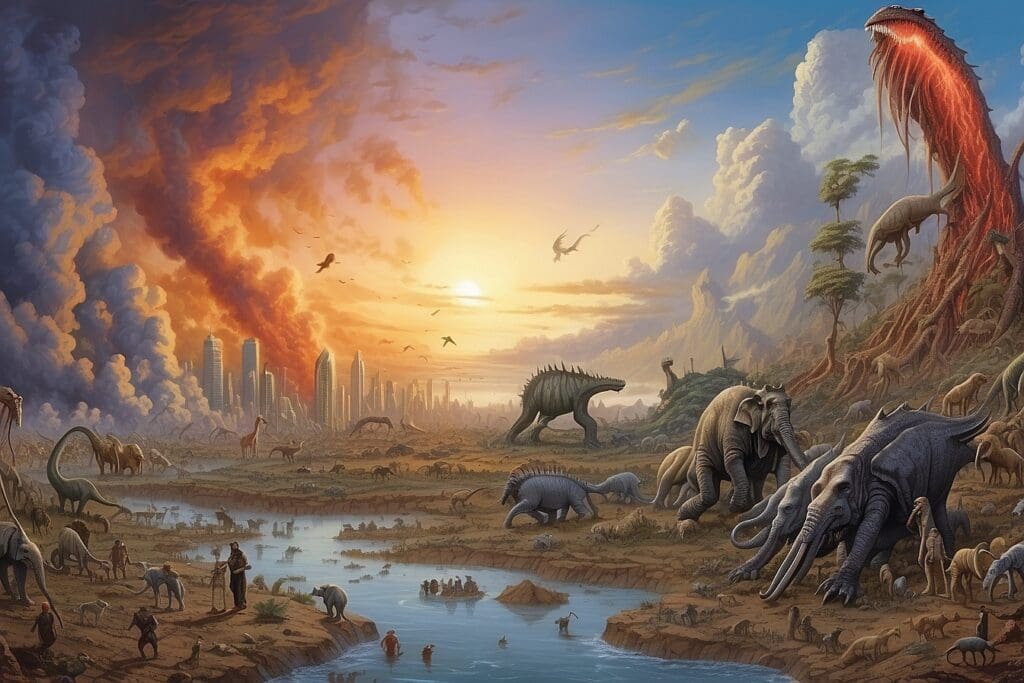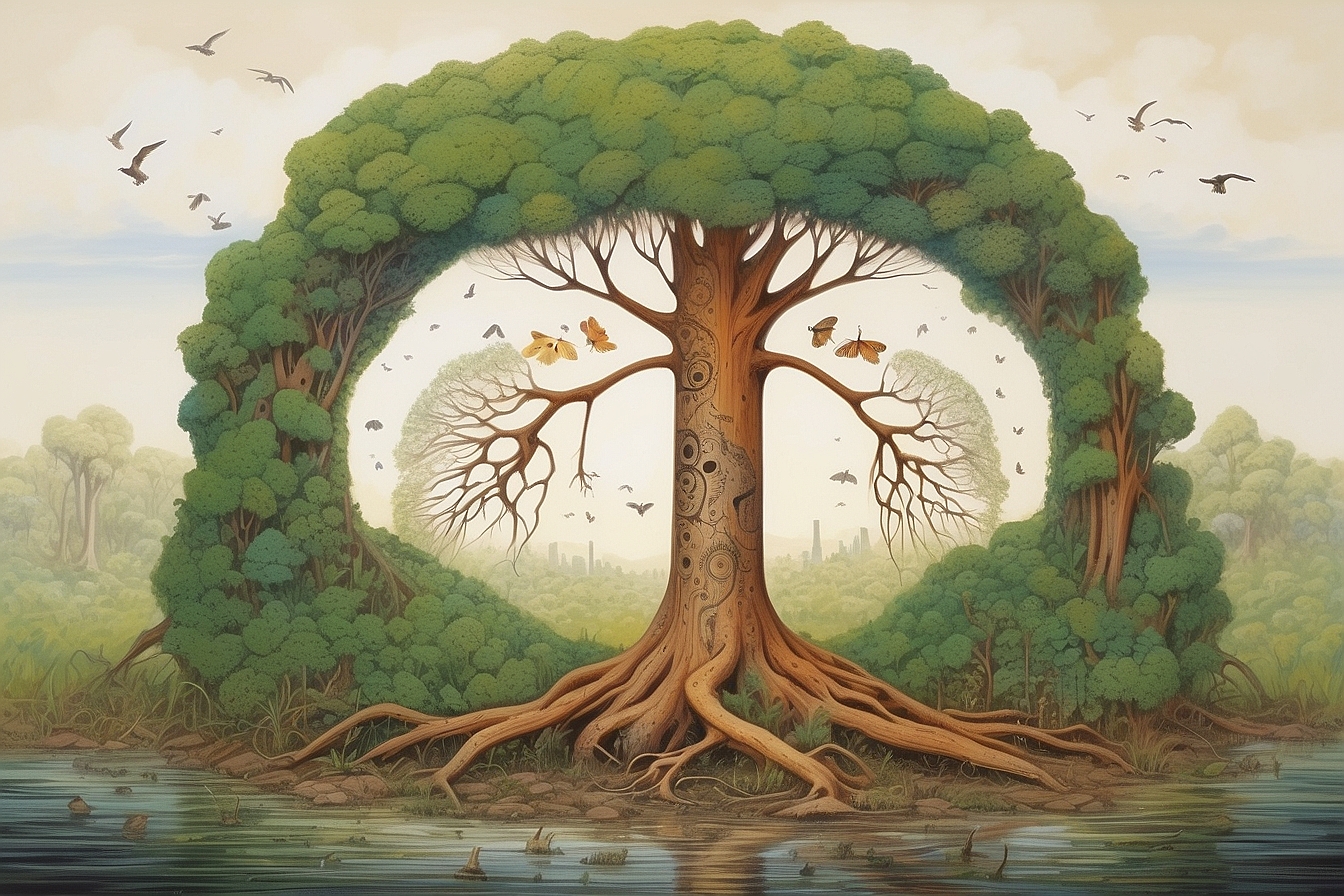It is no question that the variety of life on this planet is huge, but diminishing. There are over 6000 species of we may be in the middle of a sixth.
 4
4
- The Ordovician-Silurian extinction occurred about 439 million years ago, wiping out about 25% of marine families and 60% of marine genera, which was about 85% of all Ordovician species.5 The main factors contributing to this sudden loss of biodiversity were the rise and fall of sea levels, caused by cooling near the end of the Ordovician period. Because it is so closely related to the ocean, this is the second most devastating extinction to marine species.6 Like most extinction eras, this was not one singular event but rather a series of phases—first a major cooling that caused sea levels to significantly drop, followed by a rising of sea levels—all of which resulted in what can be seen in history as a mass extinction. Because of their preference of shallow water habitats, Brachiopods and Bryozoan families were hit very hard by this extinction, resulting in a loss of one third of these families.7
- The next extinction was the Late Devonian extinction about 360 million years ago, which, like the Ordovician-Silurian extinction, occurred in a series of stretched out events. The Devonian era showed the emergence of terrestrial life, further diversifying the planet. However, this extinction mainly affected the still dominating marine life.8 There are many theories as to how this may have occurred, but it is most likely that another wave of global cooling and glaciation hit the marine life of earth again, but may actually have been caused by the new life on land.9 Since most early terrestrial life was plant life, there was a reduction in greenhouse gases in the air, resulting in a short but major cooling of the planet.
- As life moved away from water and more to land, terrestrial life started to grow. However, the world would not allow for an unlimited development of species, resulting in the largest extinction known in the history of the planet: the Permian-Triassic Extinction occurring about 250 million years ago. Also known as “the Great Dying,” the Permian-Triassic extinction was the cause of the loss of 95% of species that existed at the time.10 There are many theories surrounding this mysterious disappearance of diversity, mostly involving catastrophic stochastic events such as a comet or asteroid impact, or a large volcanic eruption. However, it is largely agreed that whatever caused it created an extremely warm planet that depleted the Earth’s protective Ozone layer as well as oxygen from the oceans. Whatever it was, this event killed up to 95% of this Earth’s species, and was the only extinction that heavily affected insect species. After this devastating loss of life, there was a general lack of diversity known as the “dead zone” in history. 11
- The End-Triassic extinction, more often known as the Triassic-Jurassic extinction, allowed for the emergence of the ever so popular dinosaurs. This extinction occurred about 200 million years ago and resulted in the elimination of 76% of all marine and terrestrial life, this left niches in countless ecosystems that the large reptiles filled, dominating the lands and seas of Earth.13 This was most likely due to a sudden increase of carbon dioxide, possibly from climate change, flood basalt eruptions, and an asteroid impact, although these causes are still fiercely debated.14 It could have also been an eruption that correlated with the breaking up of Pangaea.15 There is also new evidence that shows that it may actually have been caused by a large release of methane gas from the Ocean floor.16
The fall of humanity is a fear that has been fueled by recent. On paper, 15 species does not sound like an alarming number of species compared to the vast numbers on record for the five big extinctions. However, one must remember that these events are only considered sudden when looking at it in terms of the whole history of the planet. These extinctions spanned over millions of years and the fact that the current rate since 2004 is 100-1000 times higher than what has been known historically is quite startling.20 The biggest difference between this possible extinction is that it is most likely completely avoidable. Past extinctions occurred because of unpredictable sudden events that caused a series of events, resulting in the loss of biodiversity. Wildlife that has been lost cannot be gained back, but we can be more aware of this phenomenon and hopefully stop the age of the humans from being another dip in the biodiversity in history of the world.





